NewsletterDecember 8, 2023
In conjunction with this issue’s focus on art and literature, we ask you to upload any personal photos or art work to share on the Year of the Sun website.
This month’s issue is below:
T-minus 4 months: The Sun in Art
Today is exactly 4 months until the total solar eclipse in Geneva! The Sun has been the subject of innumerable works of art and literature from the dawn of civilization. This month, we are exploring a handful of paintings that show artistic visions of different facets of the sun. Our Sun can be glorious and God-like or calm and peaceful or dangerous and deadly. These artists express those aspects and more.
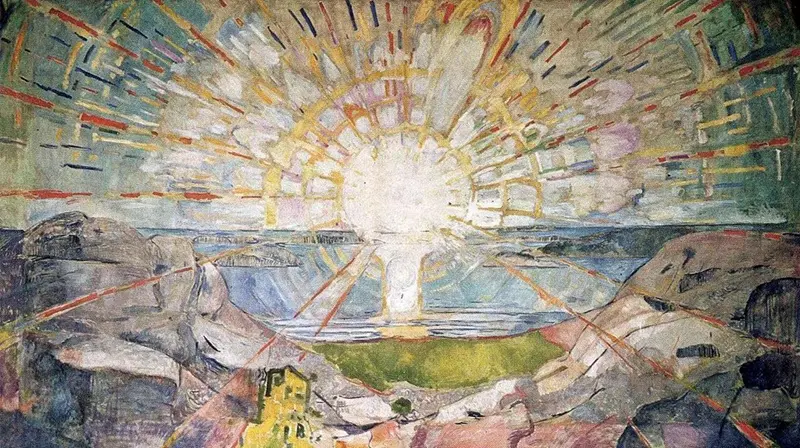
Edvard Munch painted this spectacular mural of the rising sun in 1911. It is the central, defining image in a series of 11 murals that adorn the assembly hall of Oslo University. The painting represents the sun as the light of knowledge – the primary role of the university. I paired it with lines from Walt Whitman’s ‘O Sun of Real Peace,’ a triumphal poem celebrating the splendid Sun and the end of the American Civil War.
O the sun of the world will ascend, dazzling, and take his height—and you too, O my Ideal, will surely ascend!
O so amazing and broad—up there resplendent, darting and burning!
O vision prophetic, stagger’d with weight of light! with pouring glories!
--- Walt Whitman Excerpt from 295. ‘O Sun of Real Peace’, Leaves of Grass. 1900.
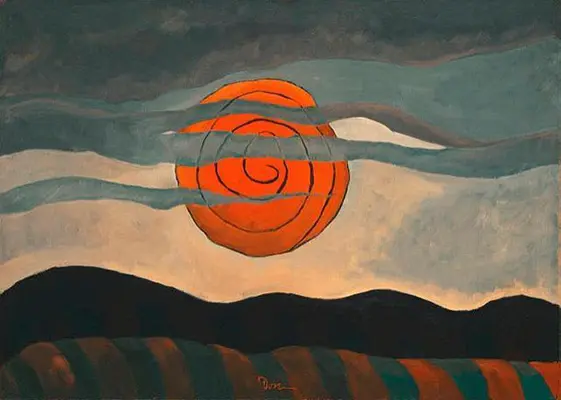
In 1935, while living in the Dove Block building on Exchange Street in Geneva, N.Y., Arthur Dove painted Red Sun. According to the Phillips Collection “its vibrant red radiates throughout the painting, illuminating the sky where it meets the land, conveying the sun’s intensity at the end of the day.”
“Down sank the great red sun, and in golden, glimmering vapors Veiled the light of his face, like the Prophet descending from Sinai.”
--- Henry Wadsworth Longfellow. Evangeline: A Tale of Acadie. 1847.
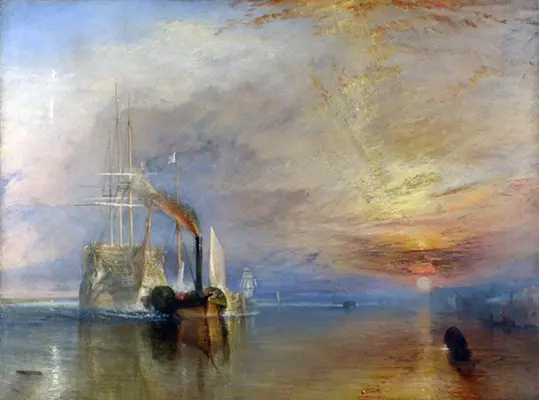
Joseph Mallord William Turner created numerous romantic paintings of the Sun among atmospheric clouds, often over the sea. One of his most well-known is of the British battleship Temeraire that became famous for its heroic action during the Battle of Trafalgar. The painting shows the fading Sun creating a huge blaze of dying light in the clouds and on the river as the ship is dragged to be decommissioned because the age of sailing warships is over.
This next image by Gustave Moreau tells the story of Phaeton, the son of the Greek god Helios, who pleaded with his father for a chance to drive the sun-chariot across the sky. Like Icarus, his aspirations exceeded his abilities. When the chariot careened out of control and caught the Earth on fire, the god Jupiter struck Phaeton down with a thunderbolt.
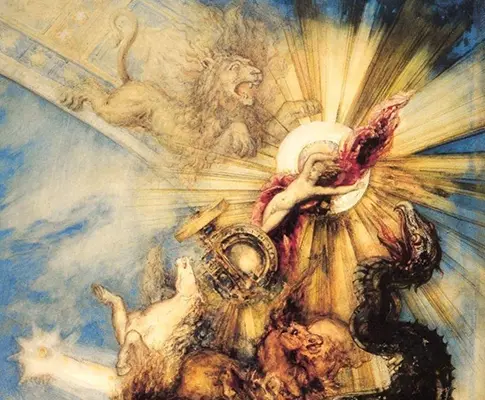
Wild men who caught and sang the sun in flight,
And learn, too late, they grieved it on its way,
Do not go gentle into that good night.
--- Dylan Thomas. Excerpt from‘Do not go gentle into that good night.’ The poems of Dylan Thomas. 1952.
This last image by Frida Kahlo is called Sun and life. This symbolic painting, which she completed near the end of her life, shows a red Sun with a third eye surrounded by bursting seed pods – one of which contains a fetus. Maybe she is saying that the sun makes all life on Earth possible.
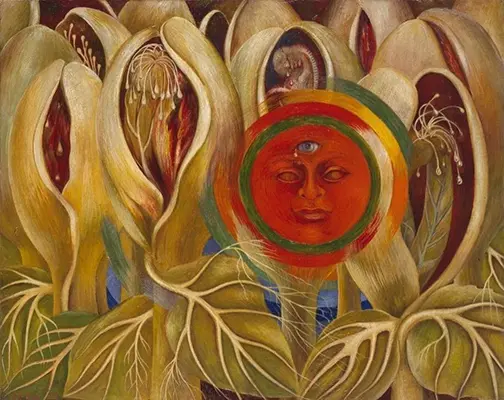
“I see the sun, and if I don’t see the sun I know it’s there. And there’s a whole life in that—in knowing the sun is there.”
--- Fyodor Dostoyevsky, The Brothers Karamazov. p. 628
With this newsletter about the Sun in art, we are introducing a new interactive aspect to the Year of the Sun project, one in which you can share your own artistic visions of Our Star. Upload any photo you have taken of the Sun here with your name and a note about its location and time. Or upload any personal artwork of any kind (for example crafts, drawings, collages, watercolors, textiles) that includes a representation of the Sun; just take a picture of it and upload it to the website. You can upload as many images as you like, and we will display them on the Year of the Sun website. Be creative or just have fun!
Stay tuned for more about the Sun as the total solar eclipse in Geneva, N.Y. approaches!
Best Regards,
—Leslie Hebb
Associate Professor of Physics, researcher of the fundamental properties of stars and extrasolar planets, the formation and evolution of planetary systems and the magnetic activity on low mass stars.
